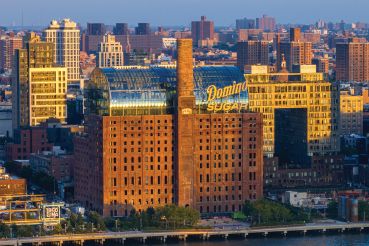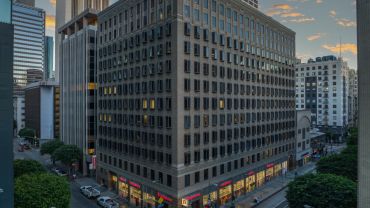Coney Island’s Roller Coaster Ride: As Brooklyn’s Amusement Mecca Opens, Operator Zamperla SPA Takes Stock
By Billy Gray March 26, 2013 10:00 am
reprintsThe so-called Coney Island Eight were an octet of modest boardwalk tenants put on the chopping block shortly after C.A.I. took over operations of the park. They included the beloved dive bar Cha Cha’s, which closed last month after relocating to Surf Avenue and sustaining damages during Superstorm Sandy, and Shoot the Freak, in which trigger-happy visitors trained a paint gun on a live human target. The game, maybe the finest representation of the antic Coney Island of old, was among the earliest victims of C.A.I.’s cleanup.
“How can you have something like that in this country in this century—shooting a human being?” Mr. Zamperla said when I asked him about the notorious amusement. “I cannot permit that.”
He said Shoot the Freak was one of the first things his company decided to do away with upon winning its 10-year contract and investing a current total of $35 million (Superstorm Sandy repairs excluded) in Coney Island’s rejuvenation.
Surviving boardwalk businesses include the fast food joint Paul’s Daughter, a noticeably spiffed-up Ruby’s bar and the boardwalk branch of Nathan’s. The original, 97-year-old Surf Avenue location of the hot dog shack is still closed for repairs needed after Sandy, but should reopen by Memorial Day.
On the subject of Sandy, Mr. Zamperla proudly pointed out that there was next to no structural damage, a testament to his company’s construction quality. But water damage was extensive, the storm surge coming not from the ocean but from Surf Avenue. “We were taken by surprise,” said Mr. Zamperla, who was in New York during the storm. “The enemy arrived from behind.”
Mr. Zamperla said Sandy caused around $10 million worth of damage. But the response to the storm was swift. “You know, we were able to build Luna Park in 100 days,” he said. “And as soon as Sandy passed, we already had a plan in place to be open on time.” Waterlogged mechanical systems were entirely replaced, and Mr. Zamperla emphasized that the rides are ready and secure.
“There were two important elements of the Sandy recovery,” he said. “First of all, make sure the park is safe. Secondly, show the people of New York that Coney Island is alive. Come back. It’s a fantastic place.”
Luna Park has had no trouble drawing visitors since opening three years ago. More than 640,000 people passed through during the 2011 season, a nearly 50 percent jump from 2010 and the biggest crowd since 1964. And while the area has been spruced up, Coney Island remains an affordable destination
Among this season’s new attractions is a spinning teacup water ride, a refurbished Spook-a-Rama haunted house and Place to BEach (capitalization intended), a Mexican restaurant and bar that replaces Beer Island. “We wanted to have something fresh,” Mr. Zamperla said of the Beer Island departure. “You can see that it’s an improvement.”
Also improved is the boardwalk itself. C.A.I. replaced much of the timeworn wood, although Mr. Zamperla said that, contrary to many reports, there are no plans to install concrete and plastic panels in place of wooden planks. The façades of the boardwalk businesses have been refined and given an almost old-timey veneer.
Meanwhile, despite a new ticket booth, the Cyclone looks more or less the same as ever. The 86-year-old roller coaster was deemed a New York City landmark in 1988, ensuring its survival as the surrounding park languished. But Luna Park has made some design changes to the famously rickety wooden coaster since it started operating it two years ago.
Indeed, Mr. Zamperla’s thoughts on the Cyclone’s rehabilitation could be read as a metaphor for Coney Island’s recent ride, the area’s adaptability and its unfurling rebirth.
“The last operators made the Cyclone rigid,” Mr. Zamperla said. “And a coaster has to be flexible. We are rebuilding and putting it back to the original way. I don’t know if you rode the Cyclone before we took over. It was too rough, too shaky. The ride has to be smooth. It can be fast, but without all this shakiness. We’re taking away all those bad parts. If the track wasn’t flexible, it created this friction. We can’t fix all the Cyclone’s problems in one shot unless we tear it down and rebuild. So every year, we’re changing and fixing some little part of the track.”


